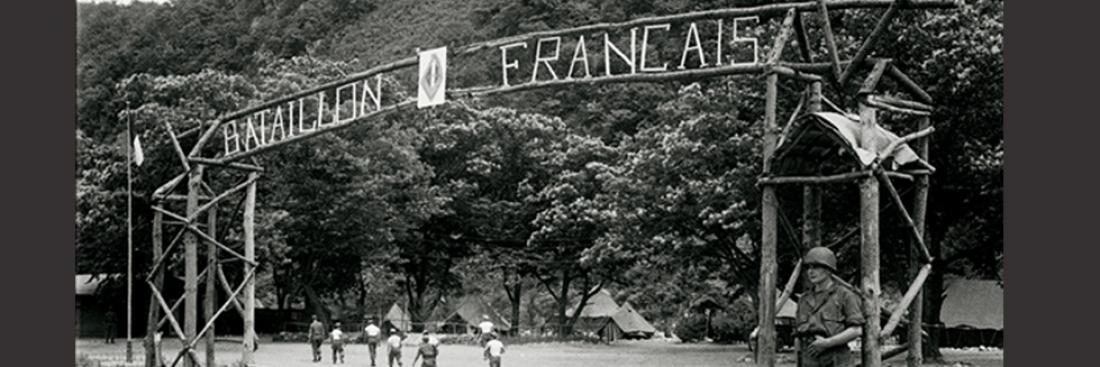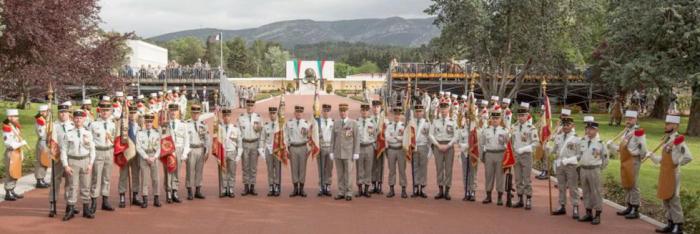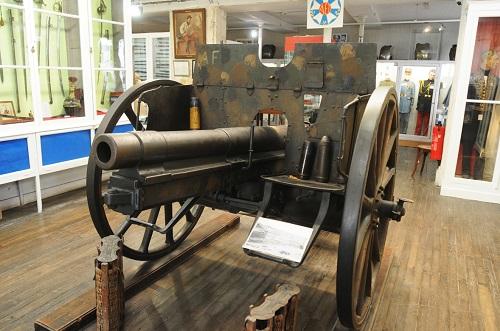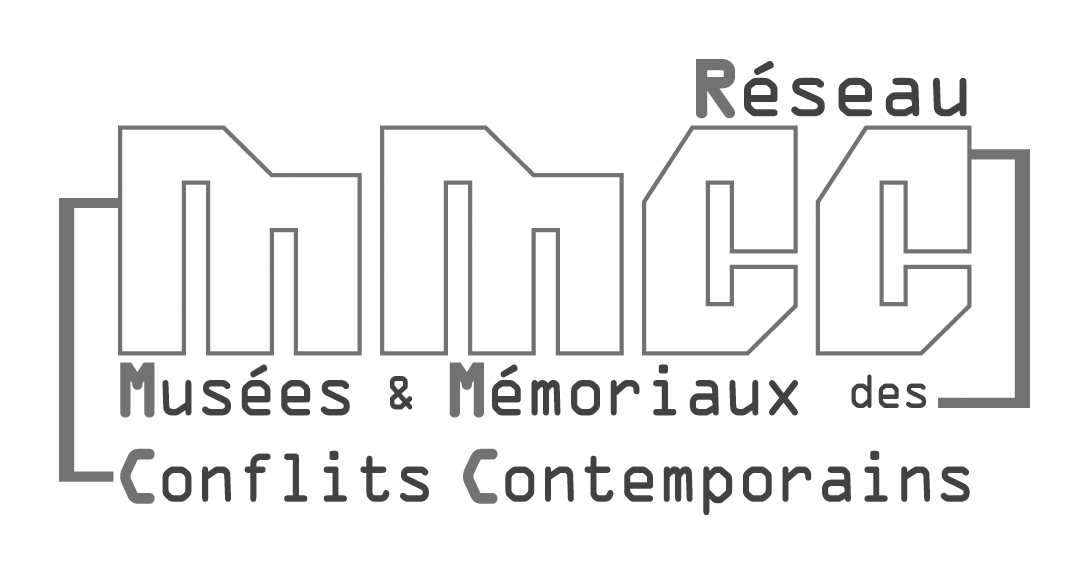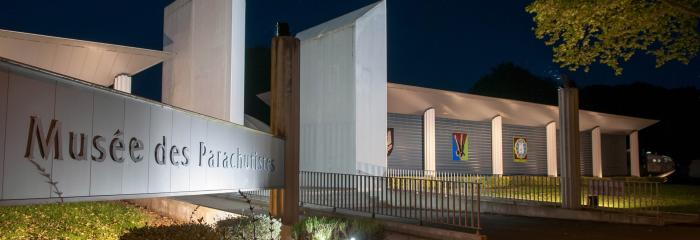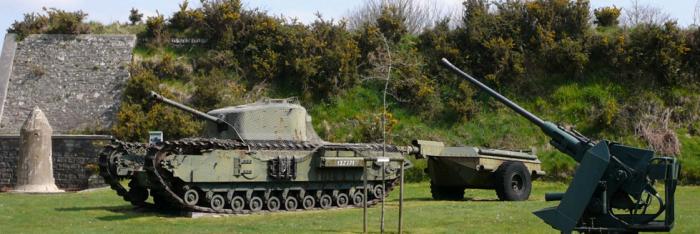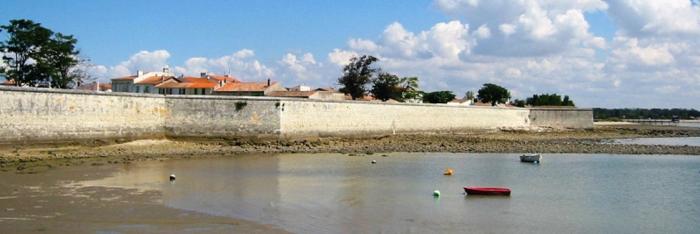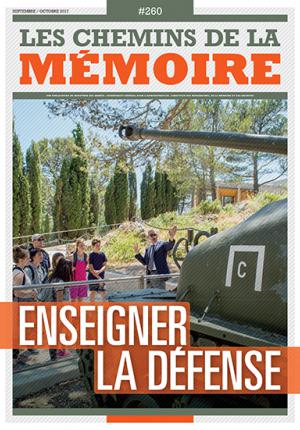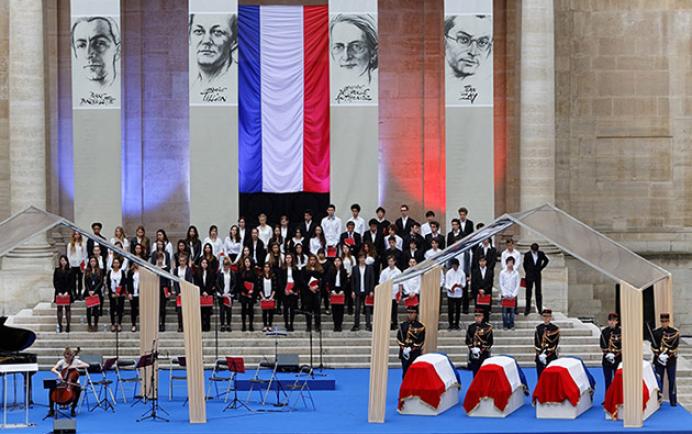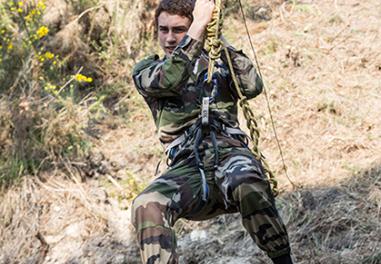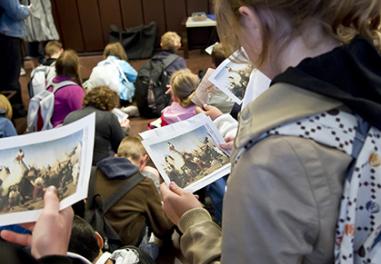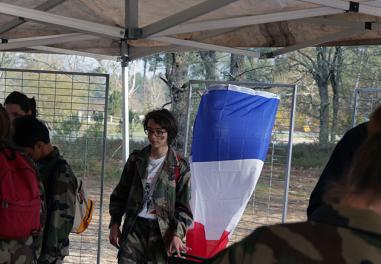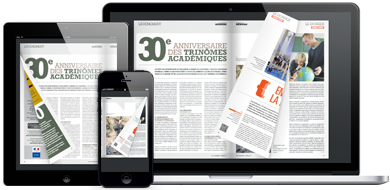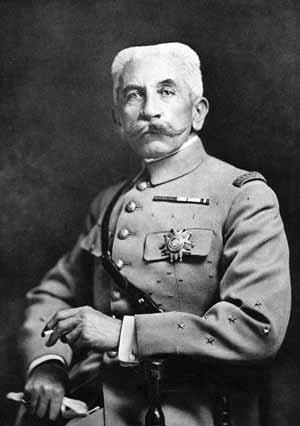This is an army museum, or what used to be called a "musée de tradition" (museum of tradition)...
The beginnings of the Musée de la Légion étrangère can be found in minister Boulanger's decision to face up to the morale crisis in the army. Trophy rooms, along with tricolour sentry boxes and Christian names for military barracks, were common at the end of the 19th Century. At the urging of Colonel Wattringue, the First foreign Regiment began building theirs in 1888. In the building that served as a guardroom for the Viénot quarters in Sidi-bel-Abbès, a room was set aside for what Wattringue called the "bric-a-brac of glory". The credit for its opening goes to Colonel Zéni, who, along with four years of work, invested a lot of energy and some of his personal fortune into the completion of the project! The huge room, with its watertight roof, now housed the most spectacular souvenirs: an articulated prosthetic limb belonging to Captain Jean Danjou, who died at the head of the 3rd Company of the first battalion of the Foreign Regiment in Mexico; the eagle from the foreign regiment flag under the Second Empire; the provisional flag made with the corps' personal money in September 1870, when the temporary Executive ordered it; the trophies brought back from the very recent Tonkin campaign. Dahomey and Soudan's African campaigns (to Benin and Mali, respectively), the Madagascar expedition, the long campaign against Bou Amana in the South of Oran, and the entry into Morocco all brought their share of trophies and war spoils. The walls became too small and the rooms overcrowded. A lieutenant named Rolley made a gift of a collection of almost thirty Malagasy assegais.
In 1931, as the sumptuous parties to celebrate the centenary of the Foreign Legion drew near, a second room was created. The "Temple of Heroes" was dedicated to legionnaires, both ranking and non-ranking, who had either fallen on the battlefield or made history in their own lifetime -- General Rollet, amongst others, preferred to emphasize the latter. But the space quickly revealed itself to be insufficient still, since several very prolific artists working in the legion's ranks, encouraged by Colonel Azan. Seargent Sméou, were painting more than sixty works in oil, on canvas or on wood, amongst them the very famous full-length portrait of Captain Danjou, which can still be seen today. At the same time, those at the heart of the Legion were reflecting on the usefulness and the purpose of the trophy room. These discussions led to the creation of Museum of Memory in 1936. It was distinct from the other rooms, and had a much clearer historic function. Lieutenant and future General Adolenko described it in great detail in his first book, "Une Visite aux salles d'honneur et au musée" (A visit to the Trophy Rooms and Museum) (Sidi bel Abbès, 1938, 281p.). A logical route was devised, guiding the visitor -- be he military or civilian -- through the operational rooms. The museum allowed the rooms to maintain their former solemnity, as they now also functioned as trophy rooms in which different ceremonies and military events were held.
At the end of the Second World and Indochinese Wars, the museum became very overcrowded. In 1958, a building housing a trophy room, with an annexe for flags and relics and a huge campaign room, was proposed. It opened in 1961 and lasted less than a year before being abandoned. But the ideas came back when it was time to build the new musée de la Légion étrangère at Aubagne, the legion's new headquarters: the 1958 plans were used as a reference, then adapted to the unique terrain on the northeast side of the army plaza. The building was to have two floors, and the exterior of the first floor would serve as a white backdrop to the Monument for Dead Legionnaires, a little like the "Voie Sacrée" railway. Defence minister Pierre Messmer laid the foundation stone on 30 April, then presided at the inauguration three years later with General Koenig, who, like he, was a former Legionnaire.
The Musée de la Légion étrangère, a visit to foreign countries under French rule In this 1960s building, every floor has its own logic. The garden level is a place for reflection and questioning, but it is open to the public on days when there are no official ceremonies. It consists of a trophy room and a crypt. It is in this huge room that a young recruit will get his Legion contract from his first section chief, a ranked foreign lieutenant, in front of the painting of Jean Adolphe Beaucé, student of Ch. Bazin, at the battle at Camerone.
From the moment his military life begins, then, the recruit is faced with a pictorial representation of keeping one's promise - and its ensuing sacrifice. Four months later, he will have completed his initial training and become a legionnaire. He returns to this room, where a former corporal or sergeant gives him some simple reference points: Camerone, the oath, the 19th Century knapsack and the famous "pudding." In a language adapted to the least Francophone amongst the new legionnaires, the Major General of the Foreign Legion -- or the officer serving as his delegate -- congratulates them on successfully completing their training, then brings them into the crypt. Standing to attention before the names of the dead who have fallen on the battlefield, iin front of the articulated hand of Captain Danjou, which is the material symbol of loyalty and sacrifice, the legionnaire walks up to the former flags of foreign regiments. Here, the general reminds him of the sacrifice made by his predecessors, the memory of which the Legion keeps alive. Much later, on the day he retires or at the end of his contract, the legionnaire, no matter his ranking, comes back to the trophy room for a similar ceremony. He collects his thoughts for one last time by this symbol of those who have fallen for France.
In a way, he is reporting to his predecessors . He will visit them again later, usually during the Camerone festivities or while he is on holiday. About 3000 former Legionnaires come back to this locus of memory, this family vault, every year. The campaign room on the upper floor is designed to portray the military history of the Legion through its battles. Here, the visitor is in a less intimate, less symbolic space. He will certainly find objects here, but he'll also find the pedagogical materials expected of a museum: information sheets, explanatory plaques, various educational software. As much as the trophy room is impossible to comprehend without a guide (for groups) or an audio guide (for individuals), the campaign room allows the visitor to follow a chronological path that is accessible to the least historically inclined -- and least Francophone -- amongst them. After being introduced to the tradition of foreigners serving France, from the Genoan crossbowmen of 1346 to the Hohenlohe regiment, dissolved in 1830, the visitor learns about the Foreign Legion from its creation after the law of 9 March 1931 to the present day. Rooms contain artefacts from each relevant historic period: arms, uniform, war spoils, objects of ethnographic interest. Along with these three-dimensional objects is the museum's impressive collection of over a century's worth of art: Benigni, Rousselot, Toussaint, Marin-Gillet known as Marino, and Rosenberg succeeded each other as the museum's pseudo-official painters. More than 400 of their works, mainly watercolour sketches, are featured. The work of the less-famous Jondvedt, Toussaint Yvon, Burda, Kauffmann, Perez y cid and Kwon rounds out the collection. Any discussion of the museum without a mention of its Puyloubier annex: the Musée de l'uniforme légionnaire (Museum of Legionnaire Uniforms). Housed in the Legion's Institute for the sick while the world waited for the "great museum" to be built at Aubagne, this unique collection, which has been curated by Raymond Guyader for almost 40 years, brings together the costumes and accessories of legionnaires form 1831 to our days. Just a small fraction is on show to the public, comprising, amongst other things, 94 uniforms modelled by mannequins, from the original 1831 get up to that worn when the French moved out of Algeria, in1968.
Latest news: an historic centre for Foreign Legion research The Musée de la Légion étrangère will henceforth be directed by a highly ranked officer, preferably a qualified curator, in charge of history and culture at the heart of Foreign Legion headquarters. The museum naturally shares the classic goals of any museum: to conserve, to valorise and to educate, but since September 2004 it has also housed a research centre. The museum's historic documentation centre was created in September 2004 and is twinned with the journal
Képi blanc. It aims to make the museum's documentary collection (incorrectly named the "Foreign Legion Archives" in the past), the Legion's historic library and Képi blanc's collections of old photographs available to the public, primarily to university researchers and publishers, with the aim of encouraging the research and teaching of military history relating to the Foreign Legion. Different kinds of sources and more than 5000 works are available to the researcher (within the limits of copyright law). Thematic searches and a computerized inventory are also available, all overseen by an experienced team.
Musée de la Légion Etrangère d'Aubagne Quartier Viénot Route de la Thuillère 13600 Aubagne Tel: 0033 (0)4 42 18 82 41
Contact by post Monsieur le général commandant la Légion étrangère D.H.P.L.E. Quartier Viénot BP38 13998 Marseille Armées Tel: 0033 (0)4 42 18 12 41 email:
museelegionetrangere@hotmail.com email:
centre-documentaire@comle.terre.defense.gouv.fr Opening Hours Winter (1 October to 31 May): Wednesday, Saturday and Sunday: 10am-noon and 2pm-6pm Summer (1 June to 30 September): Everyday except Monday and Thursday: 10am-noon and 3pm-7pm.
Directions West Aubagne Road from Thuilière (RD 44), follow the signs to Eoures Entrance free, onsite parking available
Groups by prior arrangement